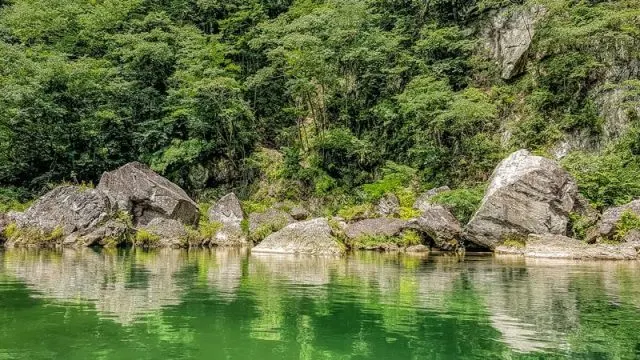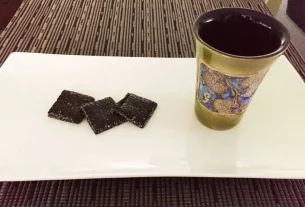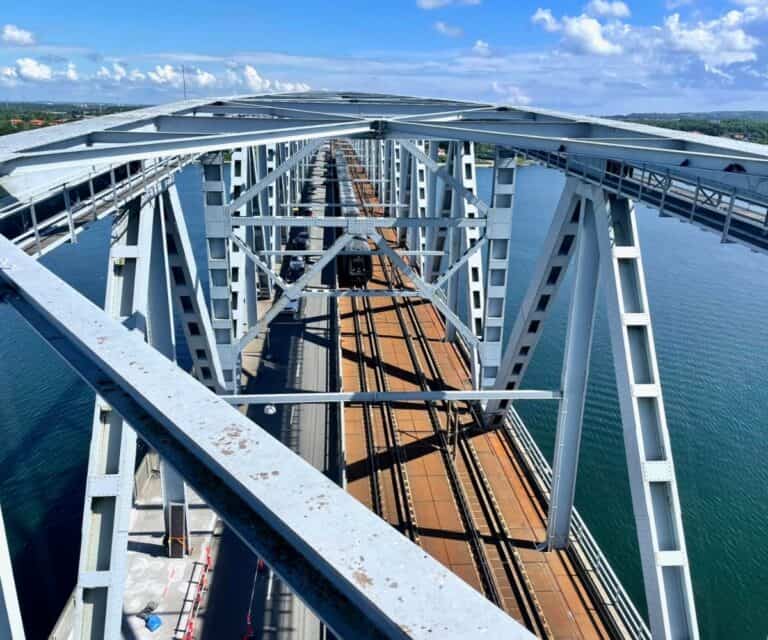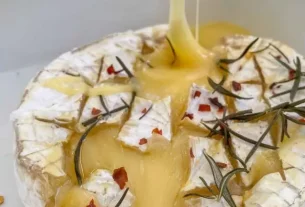Stunning natural scenery, soothing hot springs, adventure activities and incredible food. Kinugawa Onsen makes an idyllic weekend break for locals and a Nikko ryokan stay is a fabulous inclusion in your Japan itinerary.

Kinugawa Onsen is a hot spring town in Nikko, Tochigi prefecture. It’s a popular tourist destination and being close to Tokyo it makes an ideal day trip or weekend getaway from the city.
Table of Contents
Getting to Kinugawa Onsen from Tokyo
You can get to Kinugawa Onsen in 2 hours and 10 minutes from Asakusa station in Tokyo with Tobu Railways. A single ticket will cost Y 2990 but if you’re staying a night or two take a look at the Tobu Nikko All Areas Pass.
The All Areas pass includes return tickets to Tokyo, train tickets within the Nikko area, buses, a lake cruise and the ropeway. If you want the fastest option you will also need to purchase the supplement ticket to travel on the express trains on the Tokyo portion which will be around Y 2880 for the return trip.
>> Check prices for the Nikko All Area Pass <<
If you’re a train buff or love the nostalgia of an old steam train you can take the ride out from Shimoimaichi Station to Kinugawa Onsen on the SL Taiju. The trip takes around 35 minutes through some stunning scenery of small towns, cedar forests, rural outlooks and the river.
What to expect on an onsen ryokan stay in Nikko
An onsen ryokan is a Japanese experience that many visitors would enjoy on their Japan itinerary but it can sometimes seem an expensive option. If you’re someone who looks on your accommodation as a base to sleep and shower, you check in late and are up and out with the dawn then the ryokan is probably not the ideal option. If instead, you consider it almost a destination on its own, the local equivalent of a resort holiday, you’re likely to have a truly memorable experience.
An onsen ryokan will often include breakfast and the evening meal, or at least have them as an option for your stay. They will also have hot springs within the property that you can generally use as many times as you want during your stay although those with only private baths will require booking. It’s acceptable to use the baths at any time but before dinner, after dinner and when you wake are all common and really a personal preference, if it suits you, do them all.

When you arrive at your room there will be a genkan inside the door. This is a small area to remove your shoes, it’s generally very obvious being lower than the rest of the floor and with a different finish for easy cleaning. Take your shoes off, step onto the interior area in your socks or use the slippers then place your shoes in the cupboard or rack.
A ryokan will also provide a yukata for your use while you’re there. In a ryokan, they’re designed to be worn around the resort, down to the onsen and for meals if you want to. These are different from the yukata provided in a normal hotel which is more like pyjamas or lounging wear for use only in your hotel room.
There will also be socks and shoes to wear with them. In colder seasons there will also usually be a jacket that goes over it. In a few onsen towns in Japan, the hotel yukata is worn out into the town and act as a sort of ‘ticket’ to the public onsen who know what hotel you’ve come from by what you’re wearing.
>> You’ll find tips on onsen etiquette and bathing in this article <<
Meals in a ryokan are usually elaborate multi-course events. Dinner can be the highlight of a stay, especially for the foodies among us and often breakfast is as much a work of art and delicious as dinner.
Kinugawa Grand Hotel | A Nikko ryokan review
On arriving at the Kinugawa Grand Hotel we were greeted at the vehicle and our bags were taken care of while check-in was arranged. The lobby and lounge area were similar to any good quality international hotel but the view of the Japanese garden from the lounge chairs where we sat with a cold drink on arrival was something special.
The room
We were then taken to our rooms where a few key items were pointed out such as the location of the yukata and the tea set. The room was a Western – Japanese room which means that there’s a tatami-matted room for relaxing but the beds were western mattresses set on a low platform in a separate sleeping area rather than the more traditional futons that are unrolled and set up on the tatami matted area in the evening. As is typical in Japan the mattress was very firm which I find super comfortable and again had another great night’s sleep.
With teacups and sweets already laid out and a tea urn holding water at the perfect temperature, the first stop had to be a cup of green tea at the low table in the sitting room. While the low seats on tatami matting are actually quite comfortable the day bed by the window was the ultimate; the perfect balance of firm, supportive and cushioned. I sat at it to work on my laptop for a while later in the evening and the next morning and now I really want one of those at home.
The bathroom area is sectioned into 3 separate rooms. You enter into an area with a sink and a good-sized vanity then there is one door to the toilet room and another into the wet room. The wet room had both shower and bath, it can seem strange initially that you just turn on the shower in the middle of the room and everything gets wet but it’s common in Japanese homes and apartments to have it set up this way and it’s quite a luxury having all that space.
Good quality toiletries were provided throughout including Shiseido face products. The one thing that did seem unusual was that there were no towels at all in the bathroom, the only towels are the ones for the onsen which were stored in the bedroom cupboard.
The expectation is to use the paper tissues in the bathroom to dry hands and face and the onsen towels for the shower. There were 2 towels so that worked out fine but as onsen water has a unique scent that lingers on your skin, I do like to keep a different towel to shower in the room.
>> Check prices and availability at Kinugawa Grand Hotel <<
The restaurants
The team at Kinugawa Grand Hotel in Nikko are incredible and those in the restaurants and kitchens are especially so. We enjoyed a traditional Japanese multi-course meal here known as ryori kaiseki and it was truly incredible. We were in a private dining room with seating on cushions around a low table. However, it was made very comfortable as there’s a footwell under the table giving you the option to sit as you would at a western table if you want to.
There were so many dishes and each one was as artfully prepared and plated as the last.
The hot springs

The onsen pools are beautiful here and open almost 24 hours a day, only closing for 30 minutes twice a day for cleaning. After cleaning the men’s and women’s facilities and pools swap over so you have the opportunity in the course of a day to try out all the pools.
Each section has a large indoor pool with a view out through glass windows to the garden and a smaller outdoor pool that has a slightly cooler temperature, at least it had in summer. I believe pools fed by natural springs such as these have their temperature regulated by the addition of cold water so it may be adjusted by season.
The resort also has 5 private well-appointed onsen rooms that may be hired by couples or families wishing to bathe together. Konyoku, or onsen for mixed bathing, are traditional but now very rare in Japan so hiring a private room is the only time couples will usually get to bathe together.
Overall I loved our stay at Kinugawa Grand Hotel and only wished we could have stayed another night to try out all the other hot spring pools. It’s a ryokan I will definitely make the effort to return to when we have the chance.
What to do in Kinugawa Onsen, Nikko
Relax in nature. It’s not that there aren’t plenty of things to do during your stay but Kinugawa Onsen is set in a forested gorge on the banks of the pristine Kinugawa River. There are mountains in front of you and behind you, fabulous natural onsen a flowing river and everything you need for a soothing break in nature.
The Kinugawa River Boats
Feeling like seeing the area from another perspective? A wasen is a traditional Japanese wooden boat and you can take a trip down the Kinugawa river in one. The ride includes several sections of rolling water and depending on the recent rainfall the trip may be a little more or less adventurous. Be prepared for a couple of splashes but we had our camera gear with us and it was in no danger of a drenching.
Although the commentary is only in Japanese, it sounded quite the comedy act by the laughs around us that the language barrier shouldn’t put you off going. It’s easy enough to organise your ticket at the office in the English. There are lockers here if you’re catching the shuttle back and want to leave any gear behind and you’ll then be fitted with a buoyancy vest.
Once you’ve climbed down the stairs grab a plastic bag and take a seat in the shady waiting area. You stay dry boarding the boat from the riverbank into the back of the boat where you remove your shoes and place them in the plastic bag before being directed forward to your seat. Generally, you’ll sit on the bottom of the boat with legs crossed by if that’s not possible, or it’s particularly full, there are wooden plank seats that will be fitted.
Walk the nature trails
Between the hot spring resorts of Kinugawa Onsen and Kawaji Onsen, you’ll find the Kinugawa Ryuokyo Valley hiking trails. Take the train to Ryuokyo Station and it’s a short walk to the start of the track. The trail is 7 km long and suited to those of average fitness who want to enjoy the mountain backdrop, cascades, waterfalls and interesting rock formations along the way.
In spring and summer everywhere is vibrant green, in autumn you can enjoy the jewel-coloured leaves in late October and early November.
The historic shrines and temples of Nikko
During the day exploring the UNESCO World Heritage area of Nikko is a great option. It’s 35 minutes on the train to Tobu-Nikko station and the return trip and buses within the area are included in the Nikko All Area Pass.
Planning a trip to Kinugawa Onsen? Read our comprehensive guide to things to do in Nikko before you go.
A day trip to Kinugawa Onsen
A big part of the attraction in visiting Kinugawa Onsen is the ryokan experience and the ritual of relaxation associated with the onsen. Sometimes however there just isn’t time in the itinerary, the accommodation is already booked in Tokyo or a host of other reasons why it doesn’t work but you still really want to see the area and try out the Japanese hot springs you’ve heard so much about.
If this is the case you can make a day trip and visit the onsen as a day guest as we did at Yuryo Onsen in Hakone. It can still be a great experience and if you’re anything like us it’ll prompt you on to find ways to include onsen more often in future trips.
I’ll include these onsens that are open to day visitors on a map below:
- Yudokoro Suzukaze has indoor and outdoor baths overlooking the Kinugawa River for Y900 per adult
- Kinugawa Koen Iwaburo is a public onsen in the Kinugawa Koen Park with both indoor and outdoor pools. Entry is Y510 for an adult.
The seasons in Kinugawa Onsen
Like most of Japan, Kinugawa Onsen enjoys a temperate climate so your experience will vary depending on the time of year that you plan to visit.
Spring
April is the season of cherry blossoms in Japan and Kinugawa onsen is no exception. See the sakura along the river from the riverboats and enjoy the night cherry blossom festival. The blooms are followed by the green buds bursting and the hillside coming alive with brilliant green.
Summer
Summer rains make the river flow and the surrounding mountains are fresh and green. It’s a great time to enjoy the riverboats and nature trails.
Autumn
Nikko is renowned for the Koyo, or autumn leaves season so this is an optimal time to go. The colour around the river and the surrounding hillside are spectacular. The leaves colour up a little earlier up here than in Tokyo so it’s an opportunity to see the change of season if it works better for your itinerary.
Winter
There’s snow on the ground in Kinugawa Onsen during winter and you can enjoy the unique experience of soaking in the steaming onsen while the snow settles on the ground around you. Most of the outdoor activities are closed for the winter season and expect transport schedules and opening hours at attractions to be reduced.
Finding your way around Kinugawa Onsen
If you found this article useful please consider saving it to Pinterest. It makes it easy for you to find it again, it helps us, and it helps other travellers to find the information they are looking for.
Disclosure: My summer 2018 visit to Nikko was hosted by Tobu Group.









